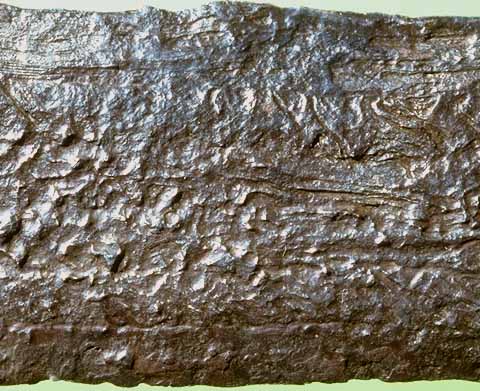

The pattern-welded structure of this blade is somewhat difficult to depict in a photograph, as the corrosion pattern allows only small foci of pattern to be discernible. The blade shows four bands of pattern-welding on both blade faces in addition to the non-patterned edges, which are vaguely visible above. In the top patterned band in the upper middle right of the picture, an area of curved diagonal lines characteristic of pattern-welding may be seen. Immediately below this an area of straight pattern, demonstrated by nearly parallel horizontal lines may be discerned. Examination of the full length of the blade discloses the four bands to include twisted areas of 2 to 3 cm. length alternating with straight areas of similar length. Towards the hilt, the areas of twisted and straight pattern appear to alternate between the bands for a checkerboard like effect, while more towards the tip the twisted areas lie ganged side by side with the other twisted areas and the straight areas are similarly side by side with other straight areas. As the alternation of patterns is somewhat different on opposite side, the blade is made up of at least 8 patterned rod elements. The best preserved areas suggest that this blade had a very broad and shallow fuller.